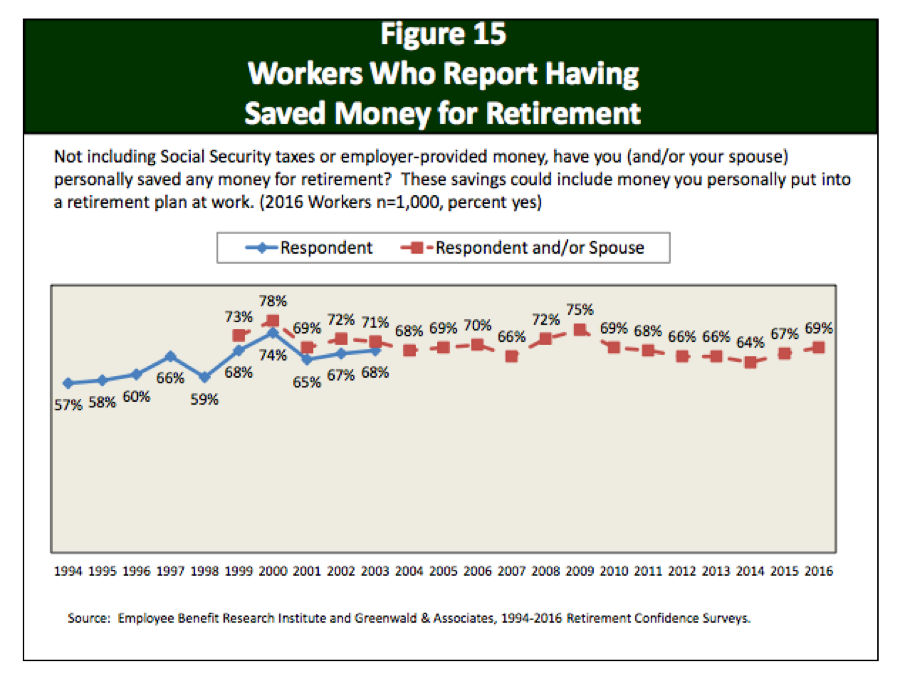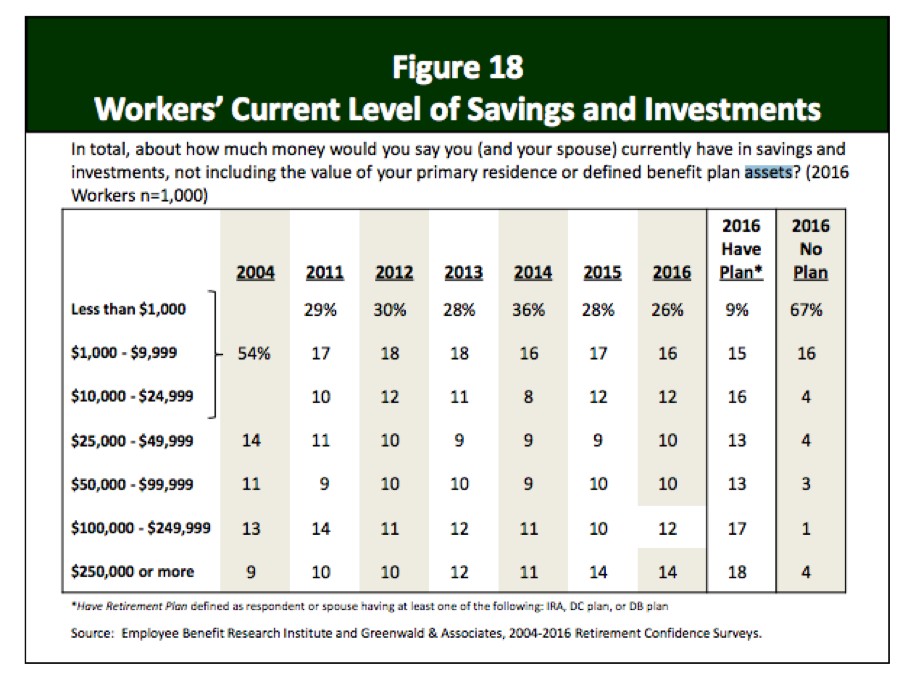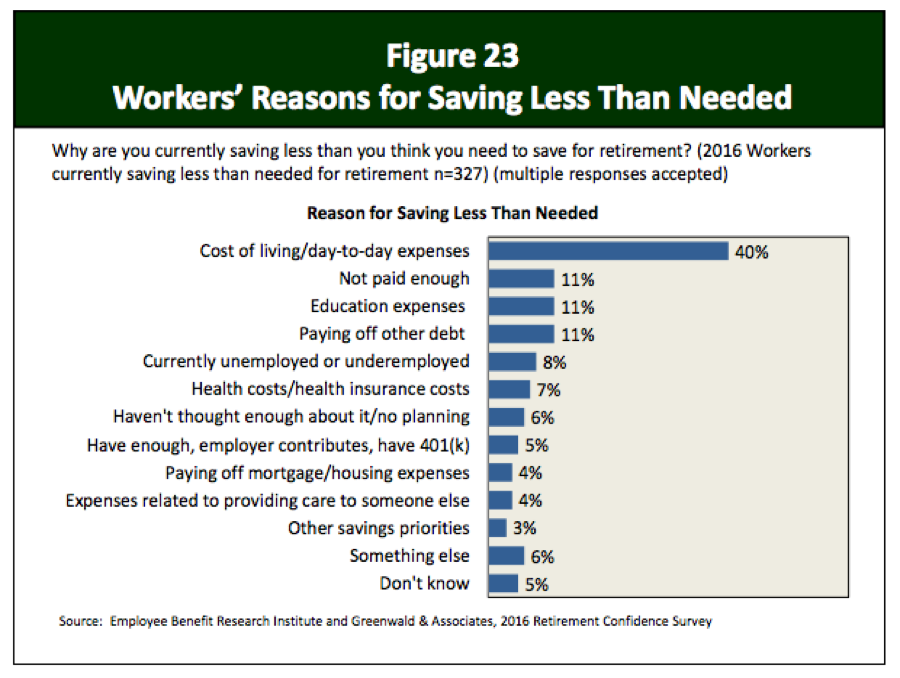A new survey by the Employee Benefit Research Institute finds that Americans remain more confident about their prospects for a financially secure retirement than they were during the recession. But that confidence belies a serious lack of preparation that points to trouble ahead for millions of workers.
Why aren’t more people saving and planning for their old age? While the situation is no doubt complex and varies for different people, a few elements stand out. Millions of workers have no access to a retirement savings plan at work, which negatively affects both planning and savings. Additionally, many workers feel they cannot afford to save for retirement given the high cost of their day-to-day expenses. And although many workers say they plan to stay employed well past retirement age, the reality is that many find themselves unable to keep working.
Related: The Best States for Retirement 2016
Here are five key findings from the survey:
1. More than 30 percent of workers aren’t saving for retirement at all. After peaking at 75 percent in 2009, the percentage of workers who say that they or their spouse have set aside money for retirement has fallen to 69 percent.

2. More than 25 percent of workers have less than $1,000 in savings and investments. Two-thirds of those who have little or no savings do not have access to a retirement plan at work.

Related: How to Simplify Your Retirement Accounts — and Make More Money
3. Most workers don’t know how much they need to save for retirement. Those with access to a workplace retirement plan are far more likely to have calculated their retirement needs, an exercise that has been linked to greater savings success.

4. Among those who aren’t saving enough for retirement, four in 10 say it’s due to the high cost of living and day-to-day expenses. To make up for the shortfall, many workers plan on working longer and living on less in retirement.

Related: GOP Candidates Would Sacrifice the Social Safety Net for Tax Cuts
5. However, the percentage of retirees who actually work in retirement is lower than the percentage of workers who plan on doing so. More than two-thirds of workers plan to work in retirement, but less than half of retirees do.






